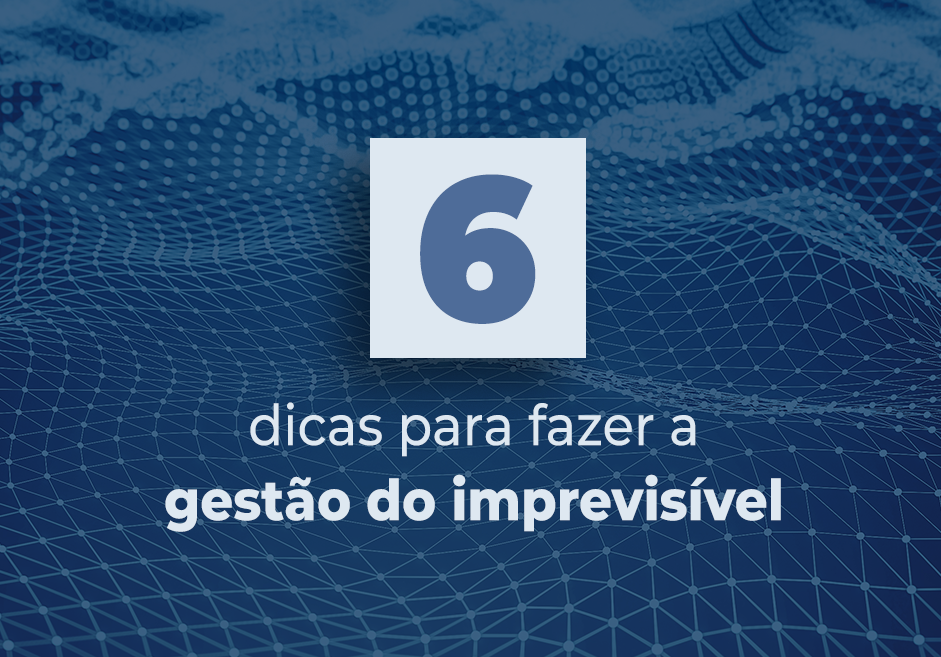6 tips to manage the unpredictable
The future is always unpredictable and no matter how different fronts have the ability to measure or estimate their long-term results, methods and practices are the main unknowns for the new to be successfully achieved. And if in our daily lives, we are always considering what will come in the future, the organizational culture of a company is not different. At least, it should be like that, as approached by Mario Rosa and Gino Terentim at Forum RNP 2020: meeting with the future.
After all, is there a way for the unpredictable to be uncovered? Or rather, how can innovation be the most assertive method for your company for the future?
To answer these questions, Mario Rosa listed 6 essential tips, and Gino Terentim explains the new "AND" era. Check out!
Leadership Dynamic like Jazz
Mario Rosa, partner and responsible for Echos Innovation Laboratory in Portugal, also Director of ABEDESIGN (Brazilian Association of Design Companies), Brand Strategist and Design Thinker, analyzes the cultural way the companies and the society see each other and interact, especially when it refers to the leadership format.
In his speech at Forum RNP 2020, Mario brought the analogy of the orchestra conductor, comparing the same command and control structure used in schools, universities, politics, economics and even at home, where the created power is focused on the leader, “in general all constructions we are in are based on the same command and control structure”, he explains.
Learn out more by watching the full lecture on our YouTube channel
In contrast to the orchestra model exemplified by Mario, he proposes a more shared practice, where the leadership of a company is willing to increase the degree of interactivity among the people, and thus, navigate the so-called “innovation journey”.
And there is nothing more dynamic and fluid than Jazz. Escaping from the classical architecture, Mario shows how the format based on improvisation and agility (from Jazz) can be visualized in more competent responses. "Improvisation is not doing things in anyway, it means that the individual is so technically good that he can use other information in the repertoire to create new things," he explains.
So, when we think about innovation, fear is always the immediate answer. Fear of breaking cultures, models and plans. Thus, one of the contributions of Mario's speech is precisely to question and stimulate reflection on the way how the logic of innovation happens, i.e., by means of the interaction of the people, which does fit the old organizational models anymore, “The more control, the less the innovation capacity”, he points out.
“In general, plans are enemies of innovation”
Far from forgetting methods and planning, innovating is much more connected to practice as a response to what appears as new and urgent. For Mário, if we keep repeating the same things, when will we be ready to innovate? Thus, he reinforces, " in general, plans are enemies of innovation, if they are not open to act with the newly emerging things".
And in a very close horizon, innovations are already happening. For those who lead or execute, the new formats instigate beyond the capacity to carry a process out, but rather to communicate culture everyone becomes a part of.
For this purpose, transforming the logic, Mário proposes, "The question is not "How do I make innovation happen", but "How do I create the context for innovation to happen?". And thus, he presents 6 essential tips for you to be able to find and build answers in your personal and organizational culture.
6 Tips for dynamic leadership:
1 - Forget the defensive and accept the error!
2 - Say yes more than no;
3 - Everyone has their time to do a solo;
4 - Playfulness is a serious and profitable thing;
5 - Provoke people's skills;
6 – To improvise is to negotiate.
For more "AND" and less "OR", isn't it Gino?
While thinking about changing the companies´ culture and their receptivity to innovation, Gino Terentim, CEO at Gino Terentim, provokes the exercise of the transition from one state to another. “How long will we spend in a state of transition to be different?”, he asks.
The difference in the models and the responses of transformations is clear and tangible through data and information. As shown by Gino, 10 years ago, the first video was released on YouTube, and got to know Orkut. Since then, the change not only in communication, but in the relationship among the people as well, has taken a different direction and different formats.
Under this same logic, leading, managing and innovating start from the concept of reinventing oneself. “It is much less a change in culture and much more a culture of change. It is much less to prepare for a change and much more to be changing all the time”, he points out.
An ambidextrous organization
“The great challenge of the “and” era is to look at things with the “and” view and not with the “or” view. In other words, let us stop choosing things and start enabling new alternatives that complement each other and not cancel each other instead.
For Gino, "an ambidextrous organization achieves revolutionary innovations, while tirelessly improving the way it executes the business model, acts and serves the existing customers". By understanding what is positive and innovative for a company, it becomes easier and easier to work with the insertion of the change, and consequently, the management.
As for the transition of states, Gino concludes with a metaphorical transition. “Do you know what the caterpillar feels like when it turns into a butterfly? At that moment of transition, what for the caterpillar is an end, for the rest of the world is a butterfly”.
